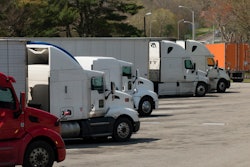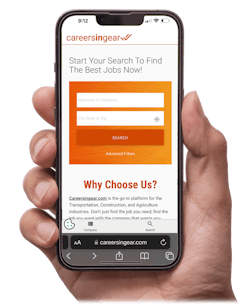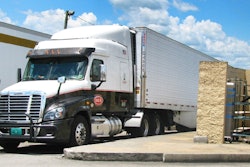New York City at the beginning of the year implemented a congestion pricing program that charges a toll -- varying by time of day and vehicle size -- for entering Manhattan below 60th Street, which is essentially anywhere south of Central Park.
The program has been under fire from the trucking industry since it was first proposed, and the Trump Administration is currently battling with the state to end the program. Despite the challenges, though, is the program doing what it’s designed to do and cutting down on congestion?
TomTom's Director of Product Marketing, Andy Marchant, talks about what the company's data shows.
Contents of this video
00:00 10-44 intro
00:20 New York City’s congestion pricing program
01:19 Before and after congestion pricing
03:56 Saving drivers’ time
Matt Cole:
New York City implemented congestion pricing in January. Is it working?
Jason Cannon:
You're watching CCJ's 10-44, a weekly episode that brings you the latest trucking industry news and updates from the editors of CCJ. Don't forget to subscribe and hit the bell for notification so you'll never miss an installment of 10 44. Hey everybody, welcome back. I'm Jason Cannon, and my cohost is Matt Cole, New York City at the beginning of this year implemented a congestion pricing program that charges a total that varies by time and date and vehicle size. That's for entering Manhattan below 60th street, which is essentially just south of Central Park.
Matt Cole:
The program has been under fire from the trucking industry since it was first proposed, and the Trump administration is currently battling with the state to end the program. Despite the challenges though, is the program doing what it's designed to do and cutting down on congestion.
Andy Marchant:
I think there's a number of cities around the world now have introduced some kind of controlled zones with congestion, pricing, et cetera, and typically it's designed, I guess, to encourage less people to drive into the city. Hence, there's a charge now to pay to do such thing. Obviously the goal is to reduce the number of vehicles, which will hopefully improve quality of life, clean up the air, et cetera. If you've got less cars driving in the city.
Jason Cannon:
TomTom's data looking at January and February, 2024 before congestion pricing and January and February, 2025 after congestion pricing showed a notable improvement in congestion.
Andy Marchant:
TomTom collects a lot of data from vehicles around the world, and we've done this for a number of years. We started collecting data back in 2007 to support our traffic services. So it's a service that we supply to drivers and vehicles, which helps them improve their estimated time of arrivals, their journeys, et cetera, by informing them about traffic along their journeys. And over time we've been able to build a real historical patterns and a good overview of what happens within cities. And every year we produce something called the traffic index, which is a global report on how traffic impacts movement within cities. In this year's report, New York was the slowest city in the us and what we did see pre-implementation of the congestion zone was a congestion level of just under 25%. And what that means is if you traveled a journey distance when there was no traffic, traveling that same distance during commuter times when there's heavier traffic means that it takes 25% longer basically to cover that distance.
And what we did see was if we looked back at the same period in 2024, it was around 25%. And if we look at the same period now in 2025, since the congestion zone has been implemented, it comes in around 17%. So you can see there's quite a difference there. That's the average across the day. In the evening peak, it's slightly higher. It used to be 43%, and that's now dropped down to around 30%. And what that means in travel times is a typical journey, which we measure over a distance of 10 kilometers. Why 10 kilometers? Well, most of the world works on a metric system, so kilometers is our base measurement, which we convert to miles, and what that meant is to cover those 10 kilometers or six point something miles took around 39, 39 minutes, something like that, and we could drop that down to around 34 minutes. So for every section of travel for those 10 kilometers, you were saving around about five minutes every time, which maybe doesn't sound a lot to people, but when you add that up over the course of a year, of a month, a week, et cetera, it can really save companies and individual drivers quite a lot of time behind the wheel.
Matt Cole:
As Andy mentioned, the congestion pricing plan does seem to be saving drivers time, which can potentially help truck drivers delivering in the area.
Andy Marchant:
I think obviously, look, I think it will impact different people in a very, very different ways. So for pedestrians, for cyclists, maybe they think it's a big benefit. You're having less cars, less heavy vehicles to share the road with, but I get if you are a company making regular deliveries into New York, suddenly you've got this additional cost which you've got to cover somehow. So I completely understand some of the comments on why they're not so happy. What I would say is, yeah, I mean, if it does the job that it's designed to do, which I guess is reducing the number of cars on a daily basis within the city, then it should make life a little bit easier because they should be able to make those deliveries quicker. The other thing to look at is by using data such as what to Tom creates and provides is you can further optimize those journeys as well.
So making sure that knowing where the traffic congestion is, even with the zone now implemented, you're still going to see congestion within the city is not going to take it away completely. So being able to monitor and know where that is would allow companies to better plan their scheduling, plan their delivery route, et cetera, because being able to avoid the areas and the times where there is more traffic means that they're going to be sat still for less, so they can actually complete those rounds quicker. But unfortunately, while a congestion zone is there, I don't think there's any way around getting in and out of that zone without having to pay those daily charges.
Jason Cannon:
That's it for this week's 10-44. You can read more on ccjdigital.com. While you're there, sign up for our newsletter and stay up to date on the latest in trucking industry news and trends. If you have any questions or feedback, please let us know in the comments below. Don't forget to subscribe and hit the bell for notifications so you can catch us again next week.










